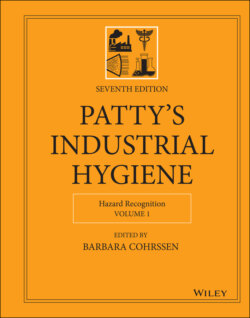Читать книгу Patty's Industrial Hygiene, Hazard Recognition - Группа авторов - Страница 45
1 DEFINING ETHICAL BEHAVIOR
ОглавлениеAccording to ethicist Rushworth Kidder, the single largest problem in ethics is the inability to recognize ethical issues (1). Failure to “listen to our gut feelings” is a leading cause of ethical lapses. Self‐serving motives can lead to unethical acts with severe, sometimes irreversible, consequences (e.g. Ponzi schemes). The environmental health and safety professional's primary responsibility is protecting the stakeholders they are advising. All actions must be measured against this directive.
Good ethical behavior is simply stated by the “Golden Rule”, Do unto others as you would have them do unto you” and it's corollary, “do not do unto others as you would not have them do unto you.” While first ascribed to Hillel, the statement in one form or another can be found in the ideology of all major religions and espoused by several philosophers.1 It is arguably the most essential basis for the modern concept of human rights and ethics.
Ethical values can be derived from several paradigms. First is natural law best defined by Thomas Aquinas.2 Aquinas espouses that humanity senses by its very nature that certain entities are always worth protecting by their very nature and not because they are a means to an end (e.g. humans). Therefore, as environmental health and safety professionals, those actions that promote human life are essential to our professional practice.
The second theory is ethical relativism holding morality is relative to the norms of one's culture. That is, whether an action is right or wrong depends on the moral norms of the society in which it is practiced. The same action may be morally right in one society but be morally wrong in another. Application of ethical relativism can lead to several problematic consequences because it is based on individual opinion and not on a consensus standard of ethical behavior. Consequences may include inconsistency in decision‐making resulting in variable outcomes.
Third, moral absolutism is the ethical belief that there are absolute standards against which moral questions can be judged, and that certain actions are right or wrong, regardless of the context of the act. According to this theory, there are no gray areas within ethics leading to inflexibility and the potential for injustice.
Objectivity is the key to ethics. This implies there are principles outside of one's self that members of a profession can use in making ethical decisions. The application of reason to achieve objectivity is often considered a cornerstone in ethics. Successfully addressing an ethical issue requires selecting the appropriate standard (e.g. American Board of Industrial Hygiene (ABIH) Code of Ethics) and applying the standard's principles in an unbiased manner.
